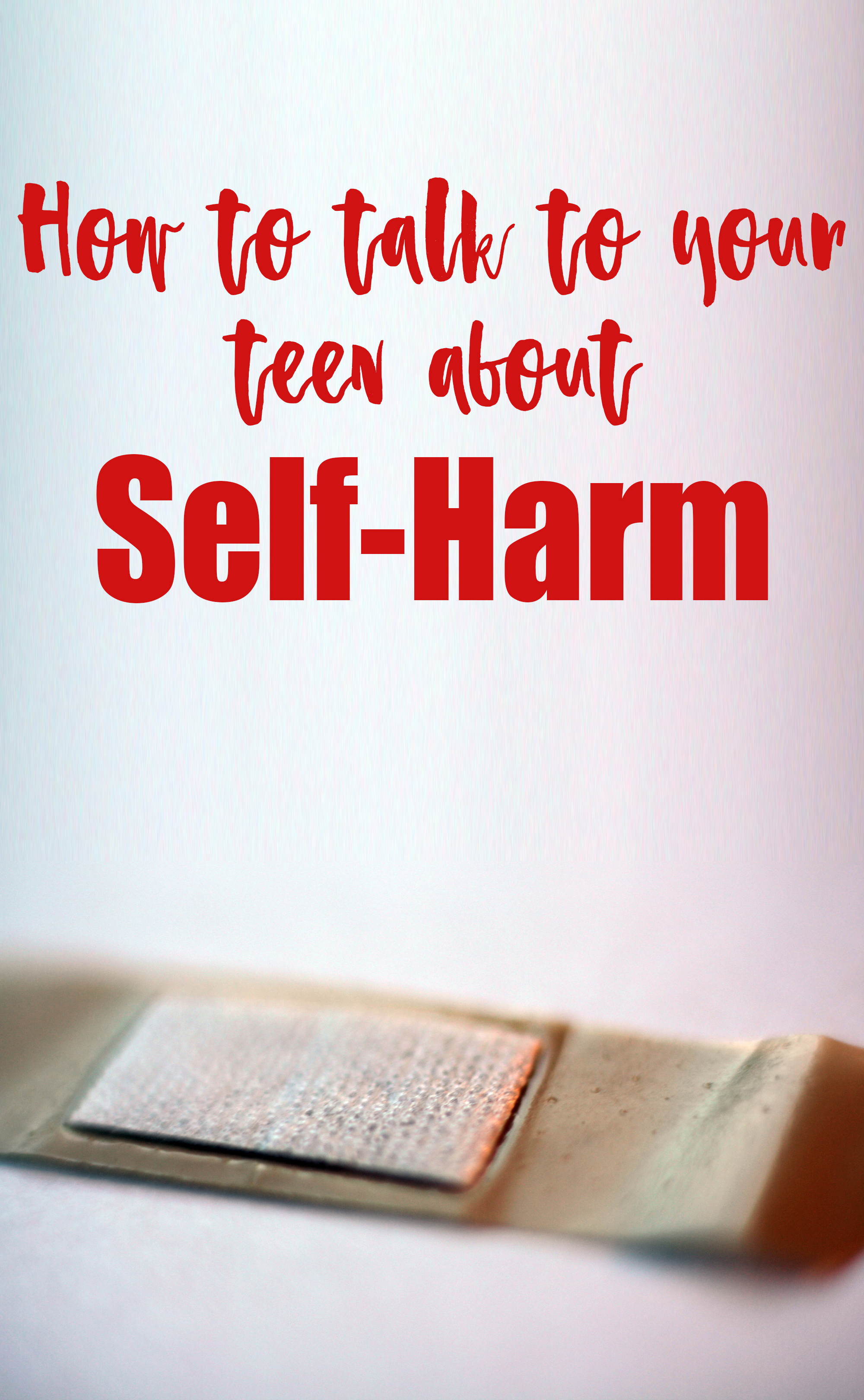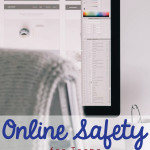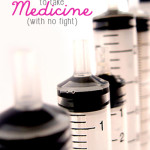Please note that the following piece contains mentions, conversations, and at times mild descriptions of self-harm. This content may be triggering for some. If you are in a situation where you feel like you may self-harm and need to talk to someone, please reach out to selfinjury.com or call 1-800-273-TALK

Self-harm. When we hear the words, so often, we think of suicidal people cutting themselves. But the reality is representative of a much, much larger problem, and there are a lot of misconceptions. Chances are, if you’re reading this, you know someone who has struggled with self-harm, whether or not you knew about it. If you’re a parent of a teenager, then it’s a guarantee that your teen knows someone who has or will self-harm in their teen or young adult years. In fact, 1 in 12 teens will engage in self-harm behavior, so there’s a chance that it may be impacting your teen directly, either personally or through a friend.
What is self-harm?
Self-harm isn’t limited to just cutting. Unfortunately, self-harm can be any number of things that are physically harmful to oneself.
Self-harm could be:
- Cutting
- Burning
- Hair-pulling or removing hair by picking it out
- Inflicting bruises on oneself
- Picking at existing wounds to cause pain and/or scarring
- Insertion of sharp objects in the skin
- Refusal to eat/deprive self of physical needs
- Causing extreme injuries like broken bones
- Going into situations that could be dangerous with the intent of causing self-harm
There are many other forms of self-harm or self-injury, and this is nowhere near a comprehensive list. People who self-harm may exhibit one of these behaviors or a combination of them.
When people think about self-harm, they often assume that self-harm in itself is a mental illness, but it’s not. Self-harm is often a sign or symptom of another underlying mental illness, but self-harm itself is simply a representation of a struggle to cope with difficult situations.
Often, people also think that self-harm automatically means that someone is suicidal. In some ways, self-harm can lead to an increased risk of suicide, but suicidal ideation is rarely the goal or reason for self-harm. Most people who do self-harm simply view it as a way to release or deal with pain without dying.
How To Recognize Self-Harm
Self-harm can be hard to recognize sometimes because often someone self-harming will go to great lengths to hide it. Sometimes you’ll see signs in secretive behavior, or find evidence in scars that are visible. Occasionally, you’ll notice someone who self-harms wearing unseasonably warm clothing to cover the scars that may be present on arms or legs.
However, without directly talking to someone, you may not know that self-harm is happening, and even if you do speak to them, there’s no 100% guarantee that they’ll be honest about their self-harm.
Some people are at a higher risk of self-harm than others. That doesn’t mean they actively are self-harming, but it does give you an idea of who may or may not be more likely. Self-harm can happen at any stage of life or any time, but it’s most prominent among teens and young adults. 1 in 5 females and 1 in 7 males will self-harm at some point in their life, and the rates are highest among LGBTQ+ youth. These are all important risk factors that you may want to be aware of when you talk to your teens about self-harm, especially if you suspect they may be self-harming.
How is Self-Harm Different than Suicide?
Self-harm may seem similar to suicide in that both harm the self. But in reality, they’re different.
Suicide is an ending of a life, with a suicide attempt being an intent to end that life through a harmful means. But self-harm is often used to release pain and emotion during a time when someone doesn’t really have another coping mechanism. It may also be an attempt to feel something when one feels numb.
But self-harm in itself isn’t suicide. The person doing it may actually be doing it because they feel it is helping their life (by giving them that coping mechanism, no matter how dangerous it may be). They may not see it as harmful in the same way that suicide is harmful. It also means that someone who is self-harming may not be actively suicidal, and that is important to know when talking to someone who is self-harming.
How Do You Talk About Self-Harm?
If you know that your teen is self-harming, you need to talk about it.
First, do not assume that their self-harm is suicidal in nature.
Ask how your teen is doing, and be prepared to listen to the answer, even if it isn’t one that you want to hear. If you ask what they’re doing or why they’re doing it, understand that those answers may be hard, too, but responding in anger may only make it worse.
Try to stay as calm as possible and listen openly. It’s okay to ask questions.
If you suspect your teen is self-harming, asking them if they are is not going to make them more likely to self-harm (so don’t worry that you’ll be planting the idea in their head).
As much as you’ll want to– and trust me, as a parent I fully understand you’ll want to– don’t make your teen promise to stop self-harming. If they are unable to stop, they may feel guilt, which may only make them repeat the cycle, or escalate their self-harm as a response to that guilt.
The best thing you can do if your teen is self-harming is to get them treatment. This may include outpatient individual or group therapy to give them better coping skills, but you should be aware that it could involve an inpatient hospitalization as well, especially if their self-harm is severe.
Remind them before, during, and after that you are there to help them. Don’t get angry, and try to understand even when you aren’t able to fully grasp why they’re doing this. Therapy is essential for helping break the cycle of self-harm. Be open to family therapy if your teen’s doctor recommends it.
Additional Resources
Self-Harm Information from the National Alliance on Mental Illness
Self-Injury Statistics from HealthyPlace (Note: Their sidebar contains many great self-harm resources)
Why I Self-Harm from HealthyPlace
Disclaimer: I am not a psychologist or psychiatrist. I am a mom. This information has come from professional resources, linked above, and from personal experiences in my time volunteering with teenagers. Please do not let this advice replace that of a trained mental health or medical expert. Special thanks to Ethan, who helped me research and gave me some great starting points and resources.




